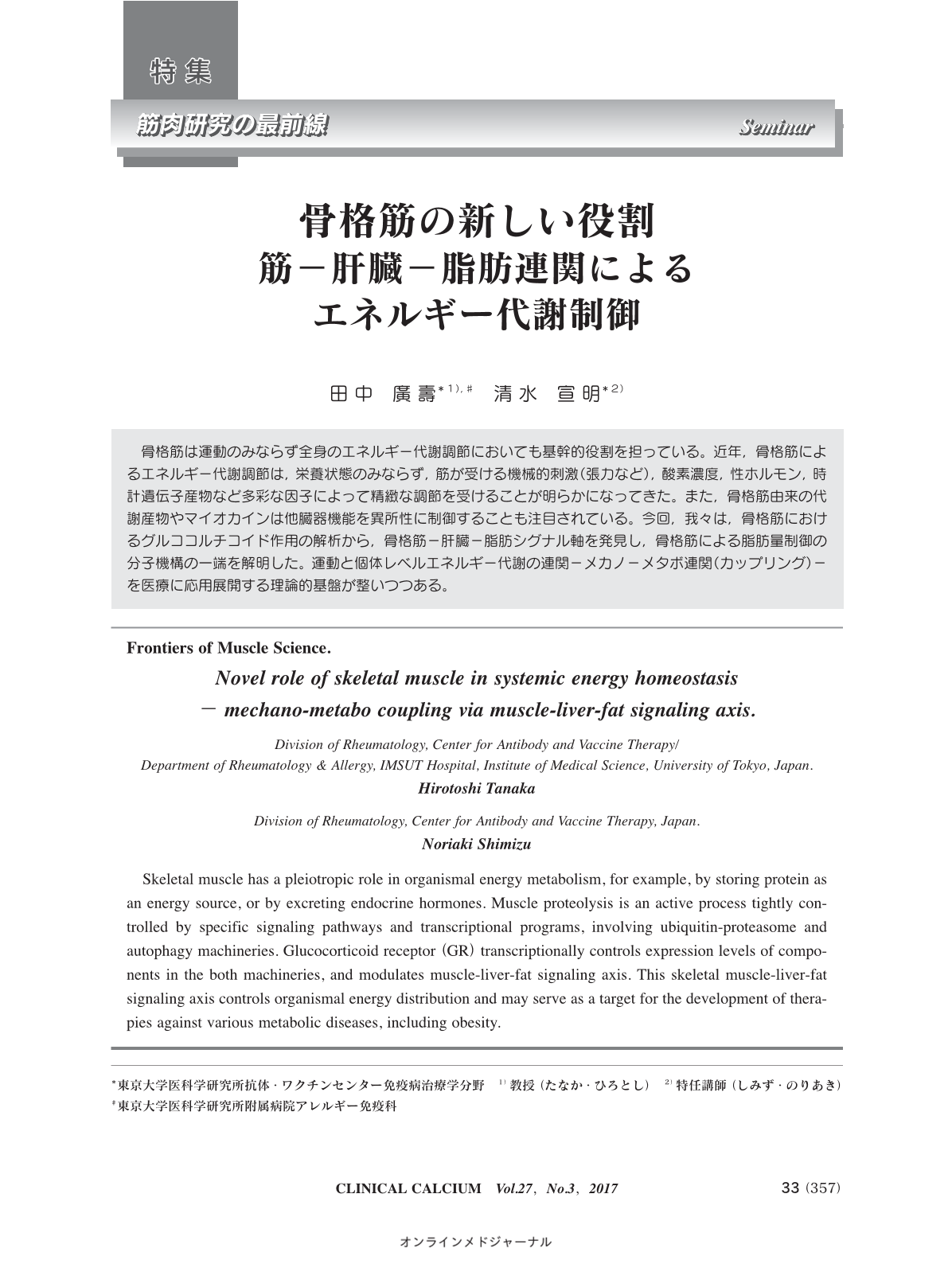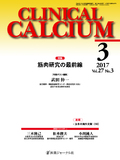Japanese
English
- 有料閲覧
- Abstract 文献概要
- 1ページ目 Look Inside
- 参考文献 Reference
骨格筋は運動のみならず全身のエネルギー代謝調節においても基幹的役割を担っている。近年,骨格筋によるエネルギー代謝調節は,栄養状態のみならず,筋が受ける機械的刺激(張力など),酸素濃度,性ホルモン,時計遺伝子産物など多彩な因子によって精緻な調節を受けることが明らかになってきた。また,骨格筋由来の代謝産物やマイオカインは他臓器機能を異所性に制御することも注目されている。今回,我々は,骨格筋におけるグルココルチコイド作用の解析から,骨格筋-肝臓-脂肪シグナル軸を発見し,骨格筋による脂肪量制御の分子機構の一端を解明した。運動と個体レベルエネルギー代謝の連関-メカノ-メタボ連関(カップリング)-を医療に応用展開する理論的基盤が整いつつある。
Skeletal muscle has a pleiotropic role in organismal energy metabolism, for example, by storing protein as an energy source, or by excreting endocrine hormones. Muscle proteolysis is an active process tightly controlled by specific signaling pathways and transcriptional programs, involving ubiquitin-proteasome and autophagy machineries. Glucocorticoid receptor(GR)transcriptionally controls expression levels of components in the both machineries, and modulates muscle-liver-fat signaling axis. This skeletal muscle-liver-fat signaling axis controls organismal energy distribution and may serve as a target for the development of therapies against various metabolic diseases, including obesity.



